The Alberta Utilities Commission regulates the operations and charged rates of three major service areas: electricity, water and natural gas. These services are regulated because they are considered to be of vital importance to the safety and well-being of the inhabitants of Alberta and the businesses they run. Any company that is involved with the transmission, delivery, or sale of electricity, natural gas or water to the public is regulated by the AUC.
Electricity Transmission
Essentially, electricity is regulated at three points in the distribution chain: transmission, distribution and sale. Companies like ATCO Electric and FortisAlberta maintain and operate both the transmission and distribution of electricity. Transmission and distribution are not the same.
Transmission occurs when electricity is carried from the power plants where it’s produced from generators fueled by natural gas, coal, hydroelectric, or other sources of energy. Transmission lines are usually made of aluminum or copper, and are the ones you see commonly hanging from large power poles or steel towers. They can have voltages over 800,000 volts, which is why they’re suspended in the air in the first place. Despite the fact that the wires are covered in insulation, the air around the lines is what is actually doing most of the insulating, which is why you can often hear lines humming on humid or rainy days — the electricity in the lines is reacting to the moisture in the air. The reason high voltage is used for long distance transmission is that higher voltages help minimize energy losses.
Transmission lines carry the electricity to a series of electrical substations. Substations step the voltage down to lower, safer levels. Various industries make use of higher voltages for the purposes of running extremely powerful machinery, so substations will have some transmission lines run from the facility directly to industrial users, while other transmission lines will carry the stepped-down electricity to a series of other substations, where the electricity is repeatedly dropped down to lower and lower voltages — hence the term “stepping.”
Given the inherent danger involved in maintaining and operating transmission lines, it’s understandable why the AUC regulates their construction, operation and maintenance to ensure the safety of employees and the people living or working near transmission lines. Additionally, the AUC regulates the prices associated with the services provided by transmission companies, and the tariffs collected to compensate those companies.
Electricity Distribution
Once the electricity has been stepped down to around 33,000 volts, electrical transmission gives way to distribution. Short-distance distribution lines branch out to cover larger geographic areas, passing through the last few substations, and dispersing into smaller, more numerous lines until the neighborhood level, where the voltage is stepped down to the level used in homes and businesses with typical energy needs. The transformers that bring electricity down to household voltage serve clusters of roughly 7 to 11 houses on average. That is why when a transformer fails, only a small portion of a neighborhood or business district loses power, rather than the entire area.
In Canada and the United States, the “normal” voltage of electricity is around 120 volts, but actually ranges from 114 to 126 volts. In other countries, household current varies from as low as 100 volts in Japan, to 230 volts in the United Kingdom and Australia, with the acceptable range falling between 216 and 253 volts. The reason for the large range is that both the U.S. and Canada previously used a standard of 240V, and so a great deal of existing substations deliver household current at around 240V.
While transmission systems are challenging to maintain due to their very high voltages, the distribution of electricity is perhaps more complicated due to the massive spiderweb of lines needed to deliver electricity to customers’ doors. This complex infrastructure is where electricity from multiple sources is brought together to jointly feed an area’s electric grid.
The complexity and vital nature of distribution systems is what warrants their regulation by the AUC, ensuring that all operators maintain a consistently high quality level of functioning and safety. As with electrical transmission, the AUC also regulates the prices that companies providing wire service may charge, as well as the tariffs collected to compensate companies for the maintenance and expansion of distribution systems.
Electricity Retailers and Providers
Until the 1990s, the electricity market in Alberta was dominated by a few, large vertical monopolies. These companies handled every step of energy production, transmission and distribution, and also functioned as the retailers for the energy they produced. This would be comparable to McDonald’s owning everything from the grass that the cows eat to the counters where the burgers are served.
With the advent of deregulation, electricity retailers stepped into the picture, functioning as the interface through which the public can now negotiate what they will pay for the energy they consume. Electricity retailers such as ENMAX and Direct Energy purchase electricity as a commodity in the open market and sell it to consumers.
The AUC has no role in the operations of or prices charged by competitive retailers of electricity. Instead, the AUC regulates the ROLR providers operating in Alberta. Various regions of the province are each serviced by a single regulated utility in that area. Many of these utility companies are subsidiaries of parent companies that operate competitive retailers as well. When an Alberta resident or business doesn’t sign a contract with a retailer, they are automatically supplied power by their designated provider. Every two years, the AUC determines the RORL price for electricity, based on the current market price, as well as external forces such as weather, world events, etc. RORL providers are mandated to charge their customers at the RORL rate, which is intended to fairly compensate providers, while at the same time charging customers at a fair rate.
Natural Gas Transmission and Distribution
As is the case with electricity, natural gas is now regulated at three levels by the AUC: transmission, distribution and sale. The AUC’s role in the transmission and distribution process is to approve the construction of new pipelines, and determine the tolls and tariffs collected from consumers to compensate pipeline companies for their costs. It should be noted that since 2009, NOVA Gas’s transmission system has been under federal jurisdiction, and is regulated by the National Energy Board (NEB). It had previously been regulated by the AUC.
Process of Natural Gas Transmission
Natural gas producers collect raw natural gas from wells drilled into the repositories in the earth where natural gas has formed and collected over time. The producers take the raw gas and transport it to a processing plant, where various components of the raw material are separated. One of the products distilled from this process is the pure natural gas that is suitable for commercial and home use. Once purified, the gas is forced into a compression pipeline that carries it away from the point of production. At this point the transmission phase begins.
Transmission is handled by pipeline companies such as ATCO Gas & Pipelines and NOVA Gas Transmission. Once the natural gas has entered the transmission pipeline, it is transported via extremely high pressures, maintained by compressor stations spaced 60 to 100 km apart. Occasionally, the gas will pass through a monitoring station that not only pressurizes the gas again, but also measures its volume. This allows the owner to determine if there is a leak in the pipeline, or some other issue affecting the transport of the gas. There are a variety of control stations located along pipelines that provide data and allow the pipeline operator to divert or control the rate of transmission.
Eventually the natural gas passes through a number of gate stations, which gradually lower the pressure of the gas to levels more suitable for industrial and home use. The pressure may be lowered to as much as 1/6,000 of the pressure used in the main pipelines. At this point, odorant is added to the natural gas so consumers can smell it in case of gas leaks (many are unaware of the fact that natural gas is odourless).
Process of Natural Gas Distribution
Distribution begins when the odorized natural gas passes into smaller, lower-pressure lines that branch out to transport the gas closer to its various destinations. As the pipelines continue to branch apart, the pressure drops and the lines diminish in size, from large gas mains measuring 60 cm in diameter, down to small local lines measuring 5 cm across. The pipeline continues to control this process to the point of delivery, so homes and businesses receive natural gas at adequate, usable pressure, while monitoring lines to ensure that they function normally and aren’t damaged by excessive pressure.
Given the potential disaster associated with pipeline and transmission-system management, the necessity of careful regulation of pipelines and the locations of their construction is readily apparent. The AUC is the arbiter that protects the safety of the public, while assuring that companies are compensated fairly for their distribution and transmission services.
Natural Gas Providers
As was the case with electricity, until a few decades ago, the natural gas market was dominated by vertically integrated monopolies, which controlled natural gas from the point of extraction to the point of sale to the consumer. With deregulation, natural gas providers and utilities now purchase natural gas from the producers and sell it to the general public. Competitive retailers sell gas on contract to consumers at prices they dictate, over which the AUC has no oversight.
The AUC’s role is to determine the monthly regulated rate for natural gas, much as it does for electricity RRO rates. Designated utility companies in each geographic sector of Alberta are legally mandated to sell natural gas at the regulated rate to consumers who elect not to purchase from competitive retail providers. The AUC also determines the terms and conditions of the services provided by regulated utility companies.
Other Regulated Services
Much as it does with natural gas and electricity, the AUC regulates the market rate for drinking water, as well as the terms and conditions of water services. It also regulates the Alberta Electric System Operator (AESO). AESO operates the market through which electricity is bought and sold, and plans and operates the Alberta Interconnected Electric System (AIES), which is the sum total of the province’s electricity transmission and distribution system.
The AUC is authorized to hear objections regarding AESO rules and make judgments about disagreements. Lastly, the AUC regulates the Market Surveillance Administrator (MSA), which monitors the natural gas and electricity markets in Alberta, assuring open competition and fair conduct. The AUC determines the penalties that the MSA may impose, and acts as arbiter in complaints against the MSA, or when the MSA brings a case against someone.











